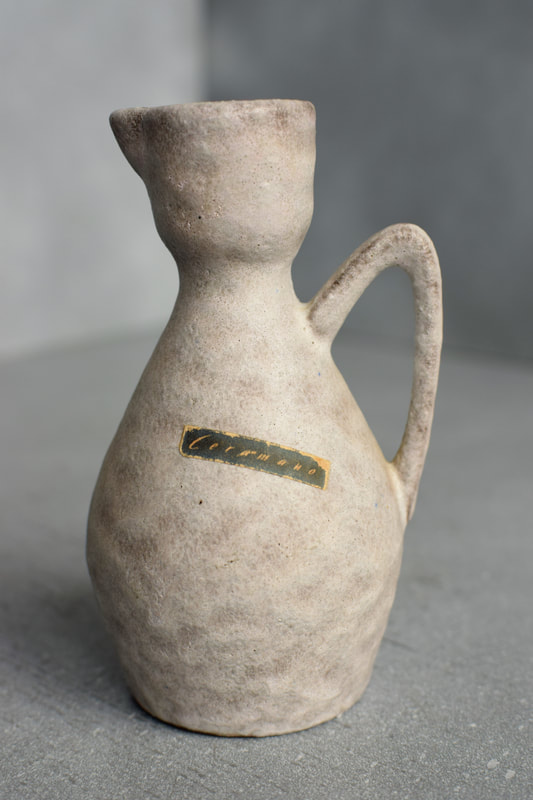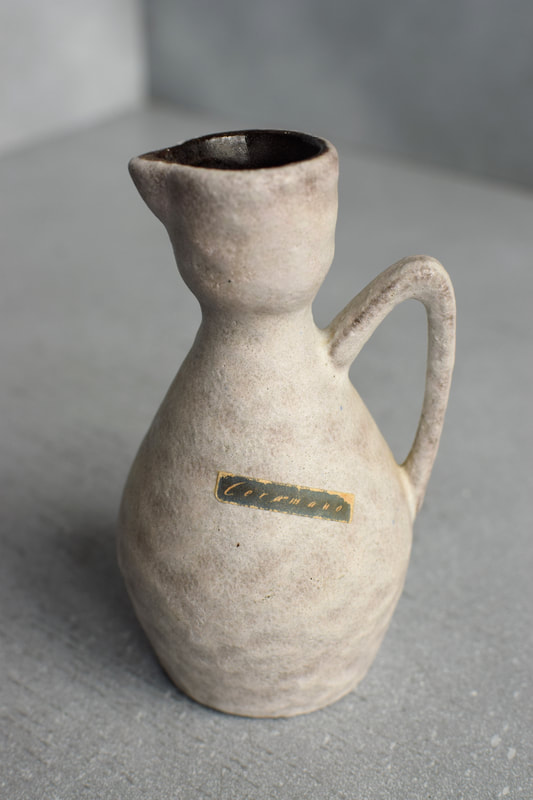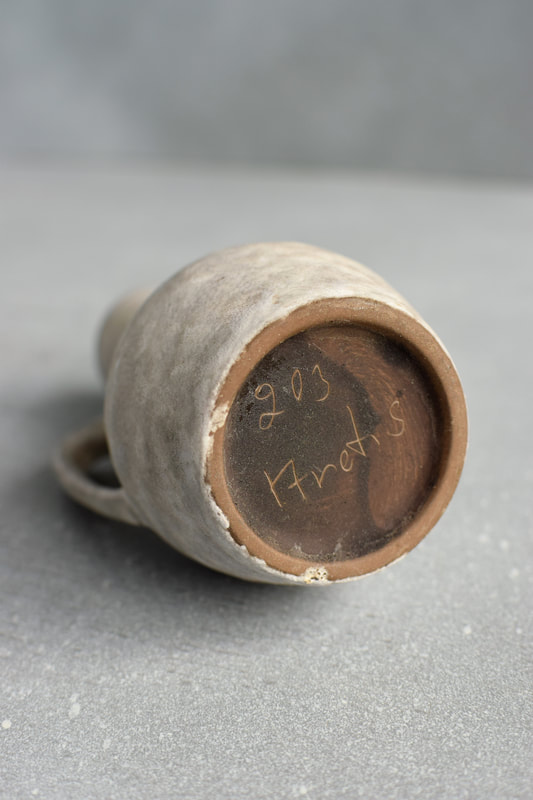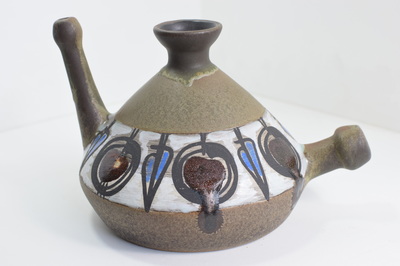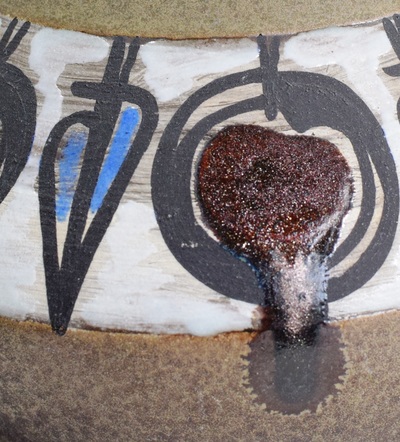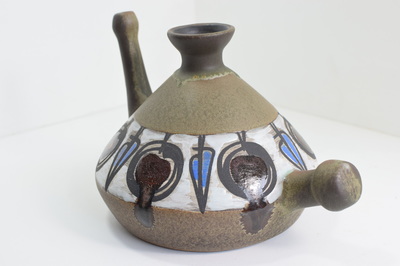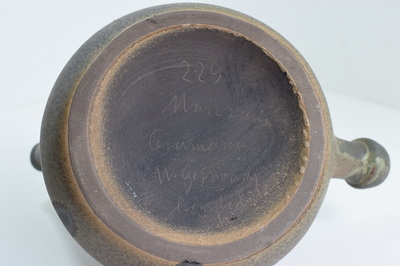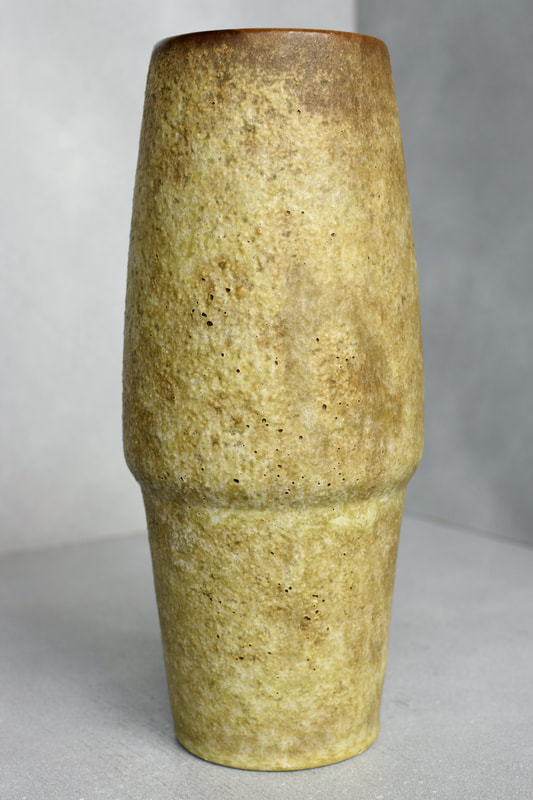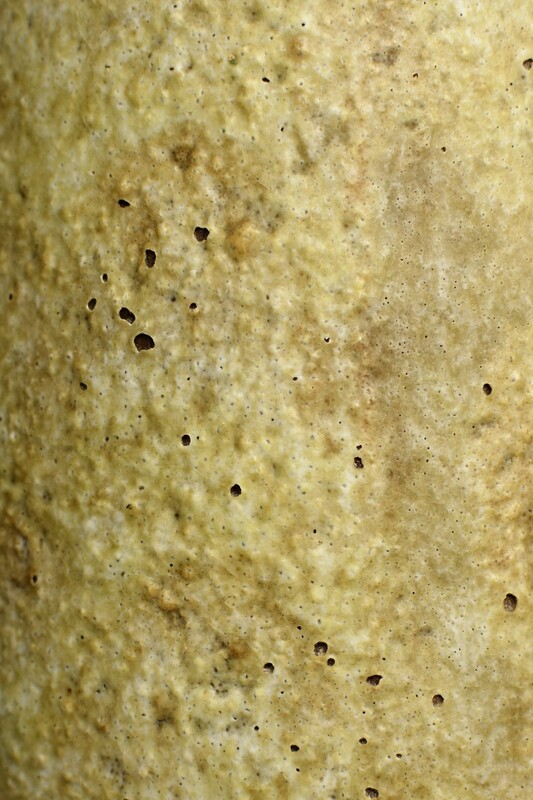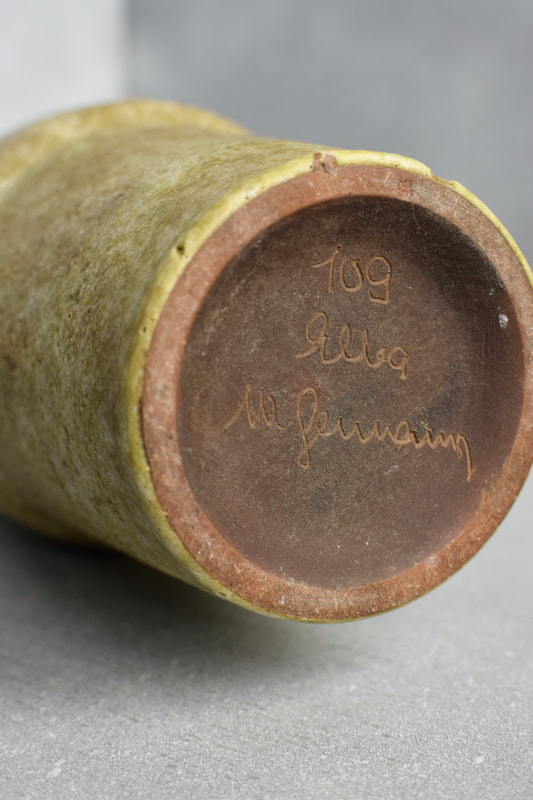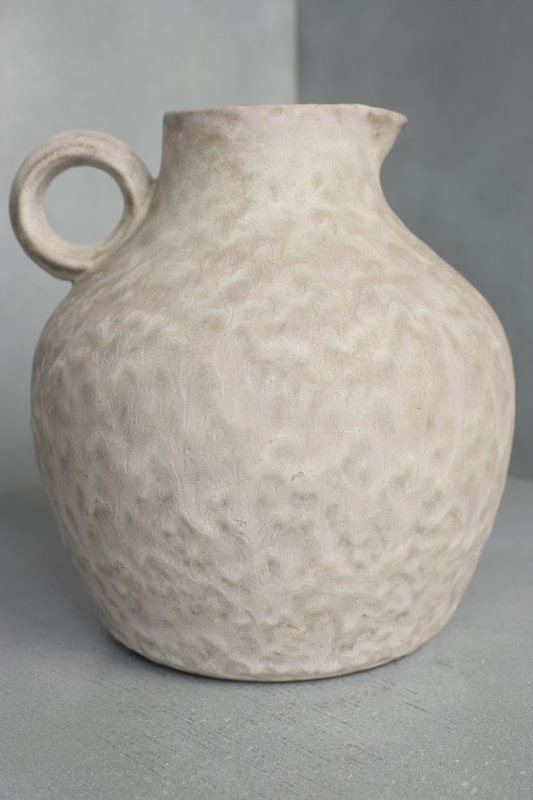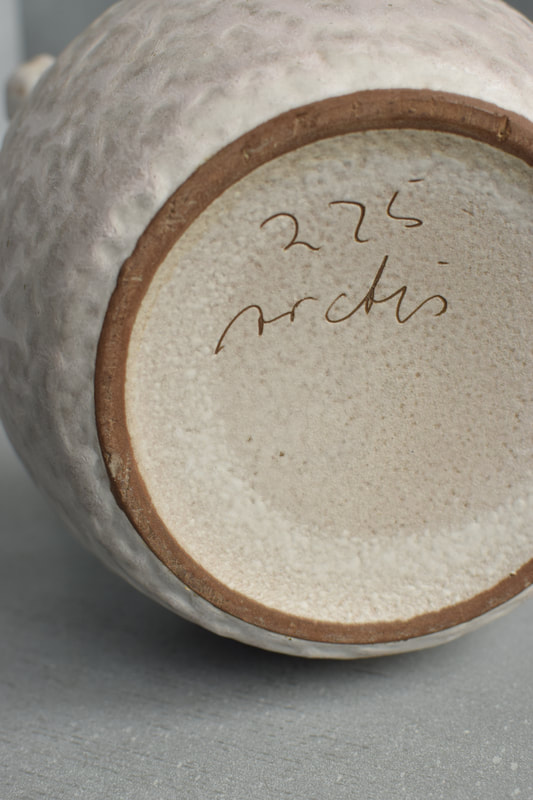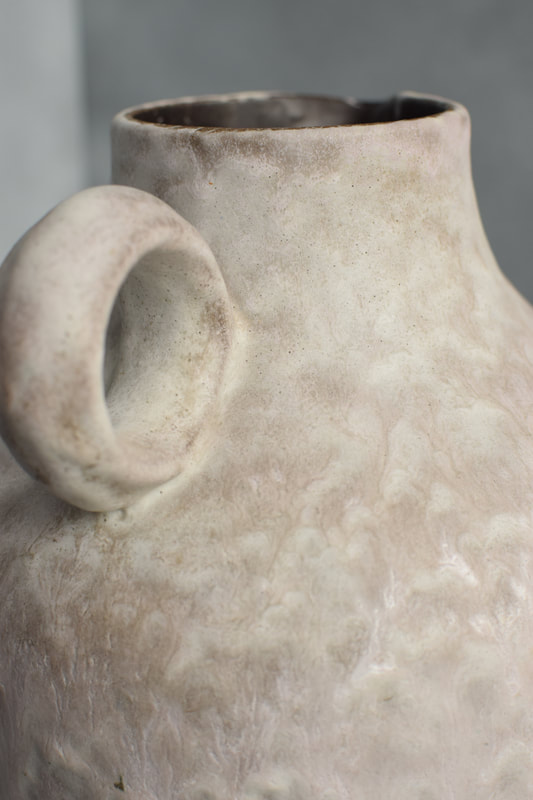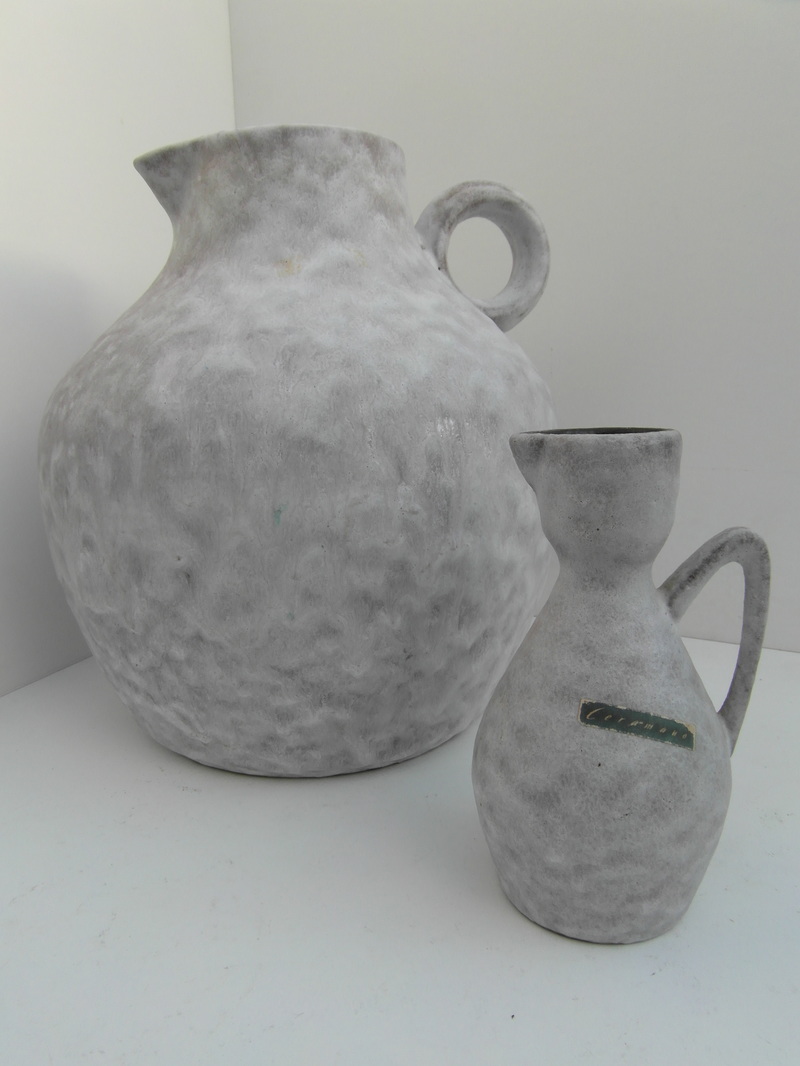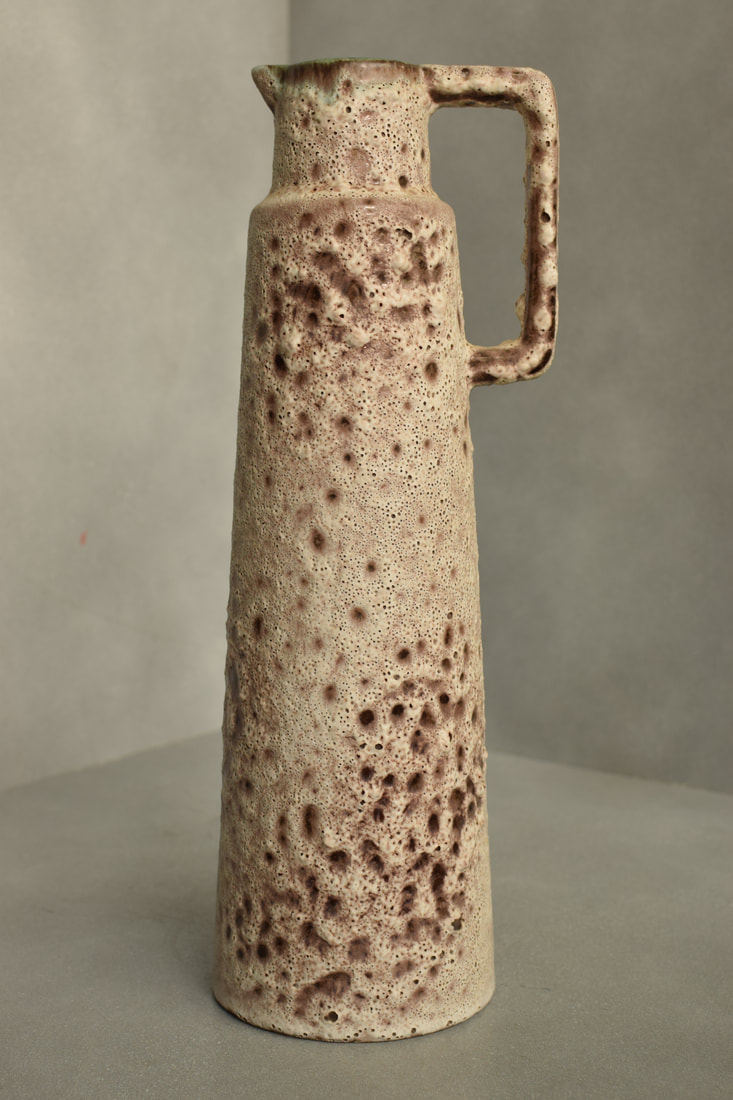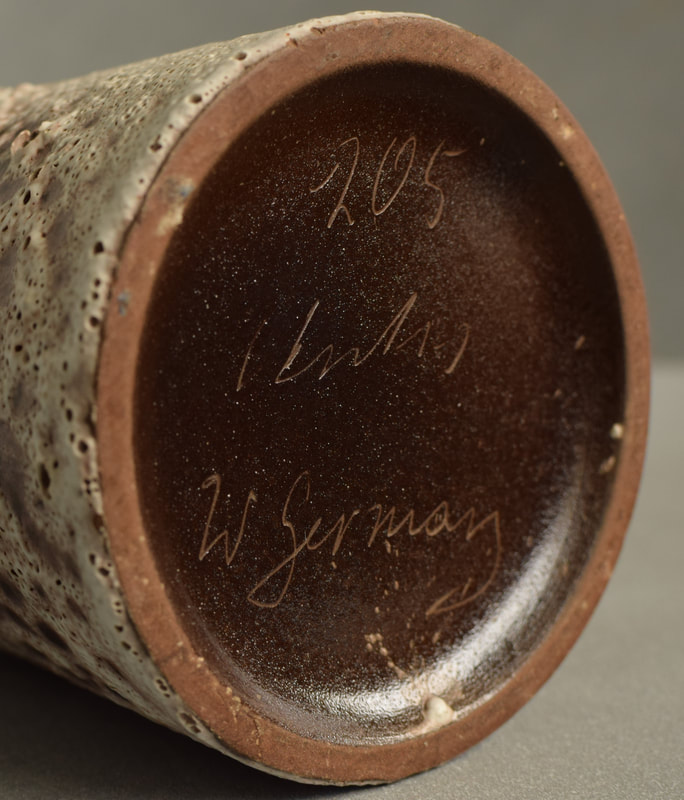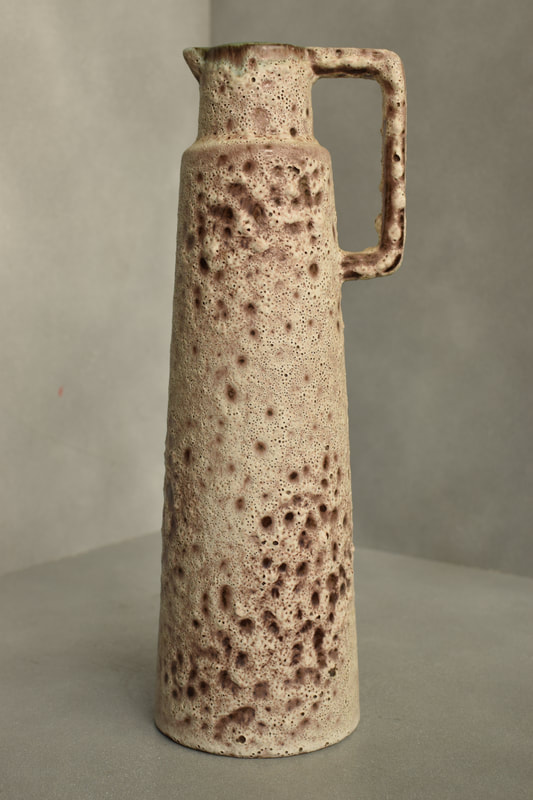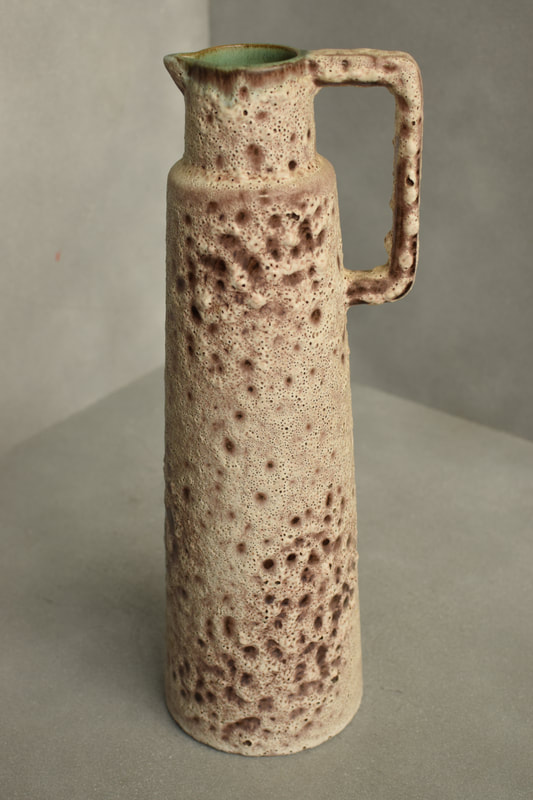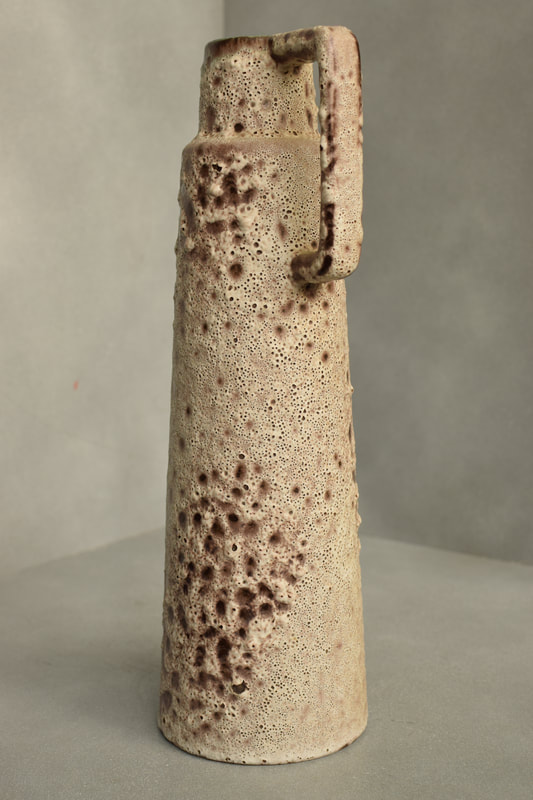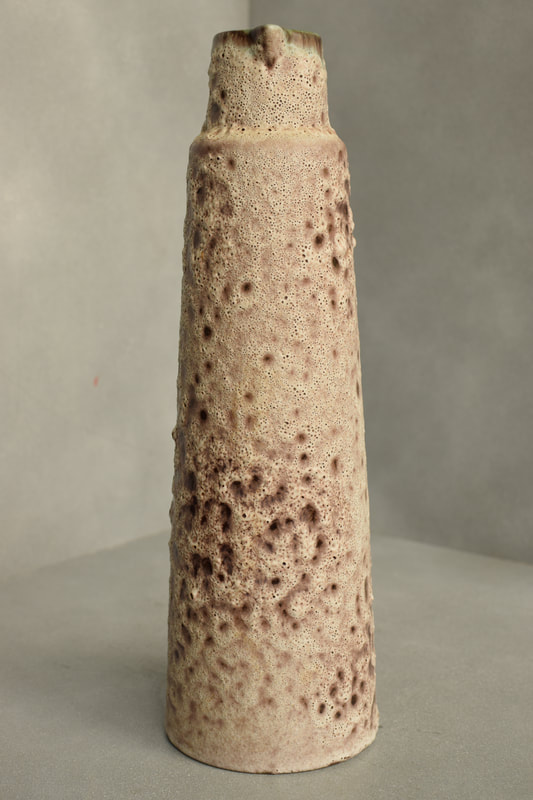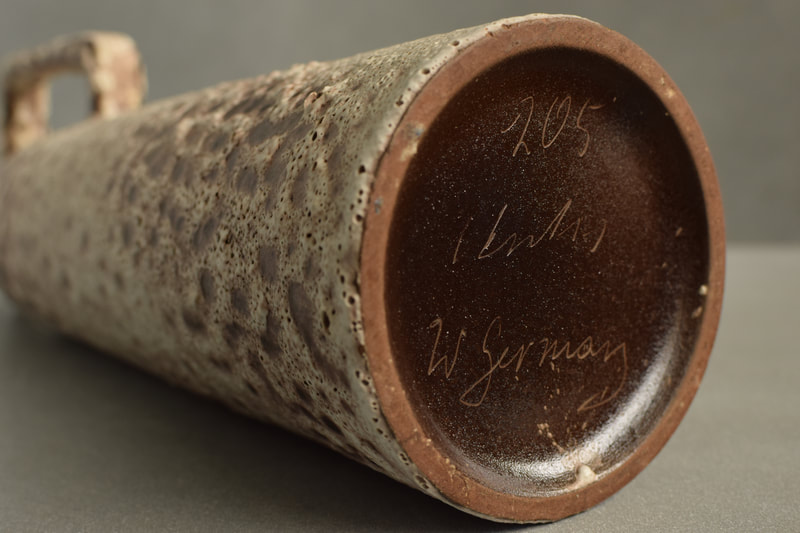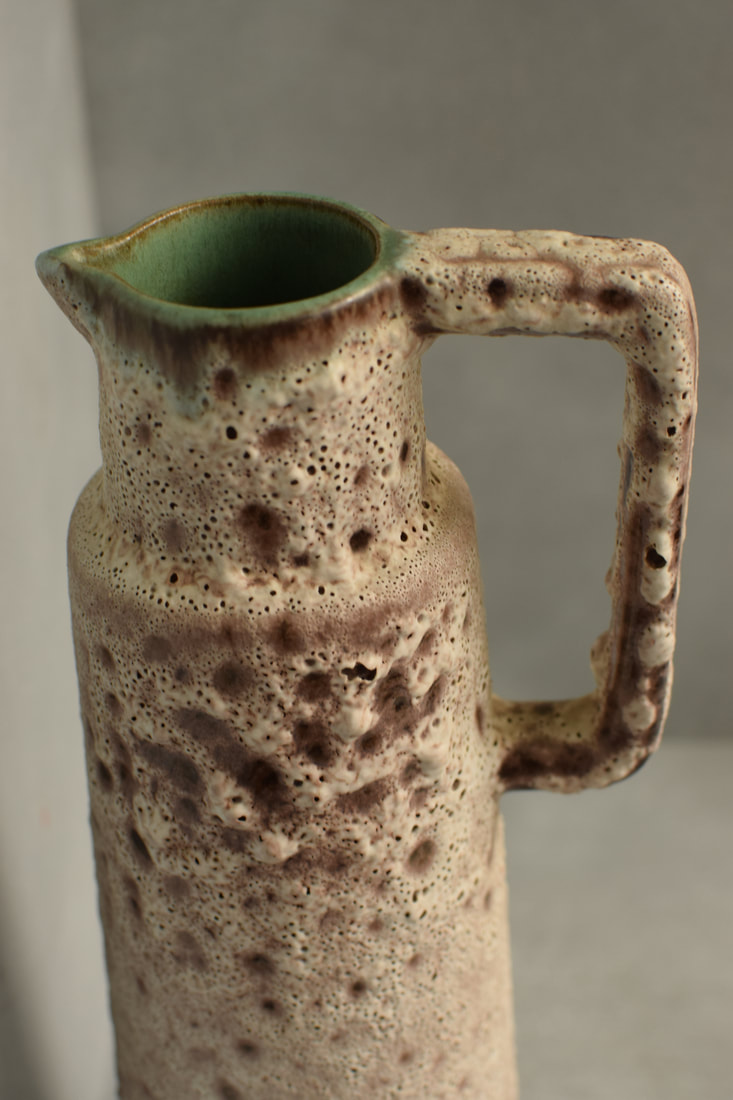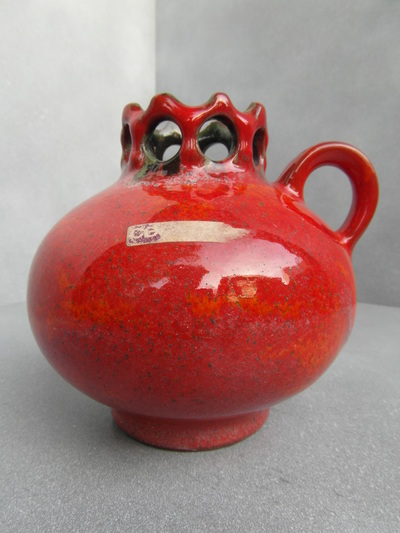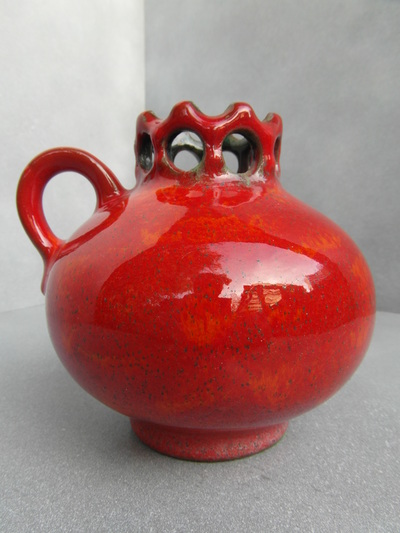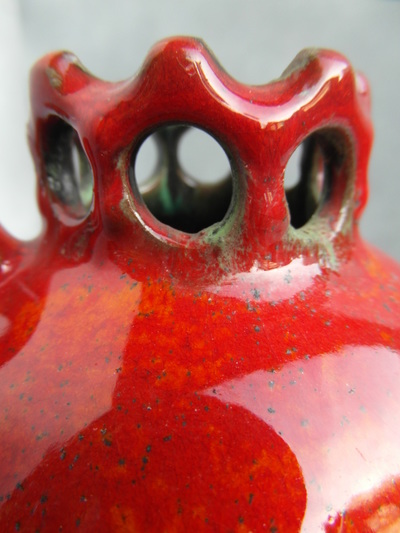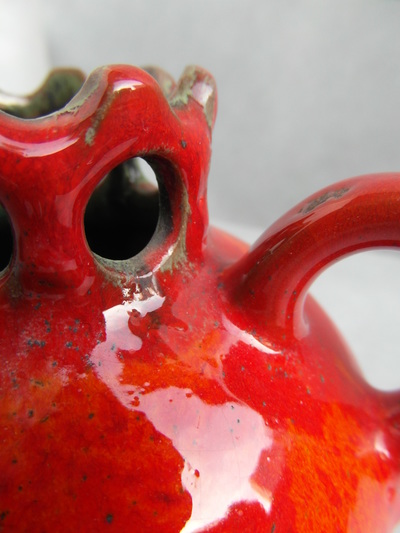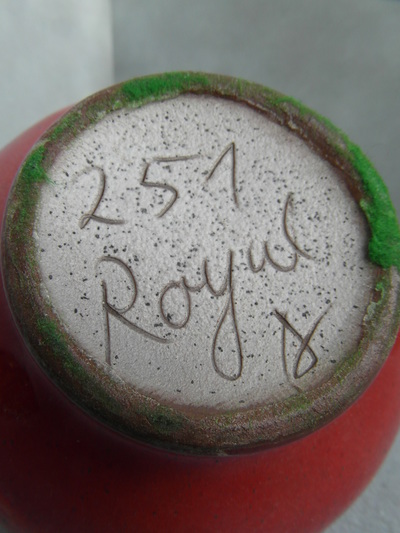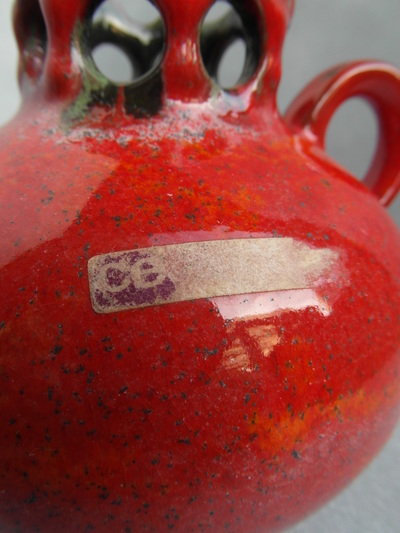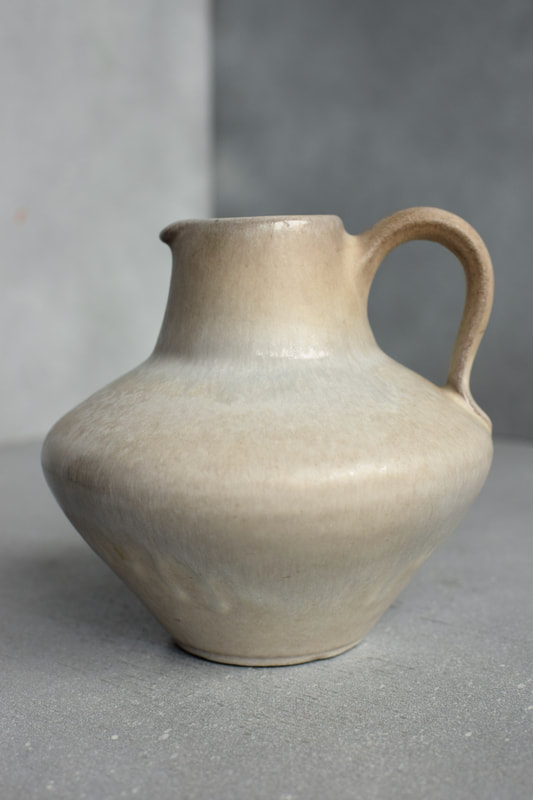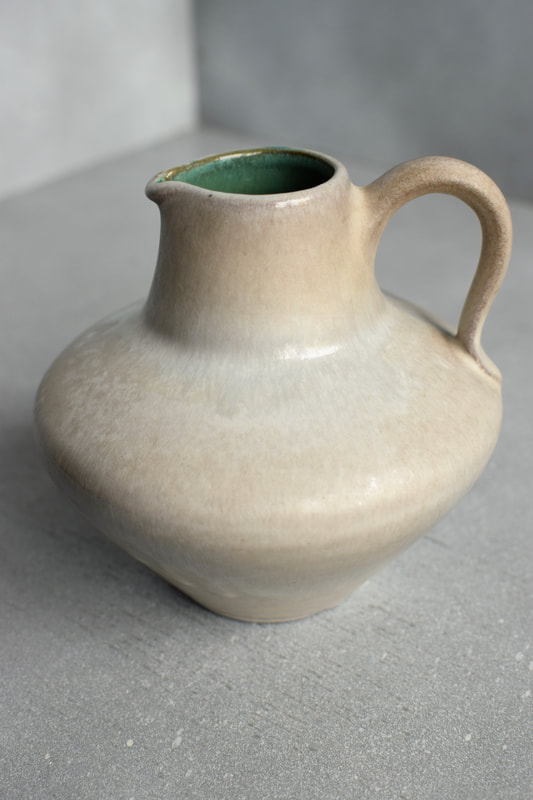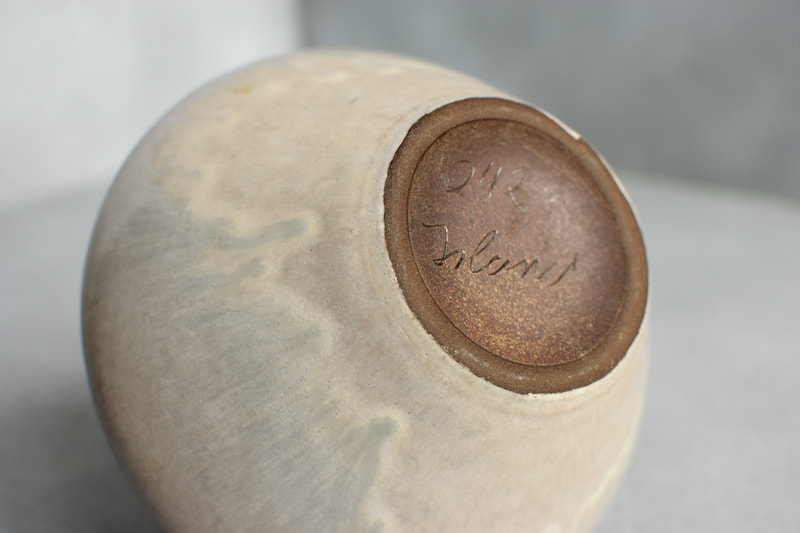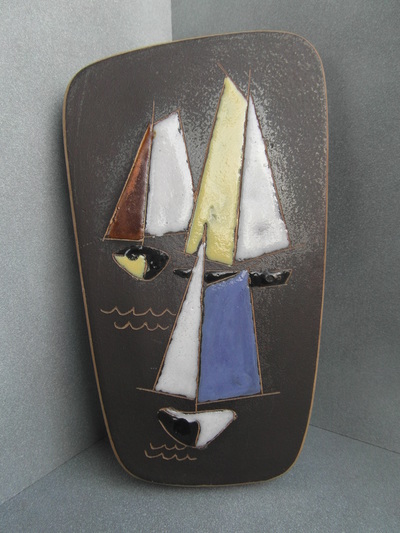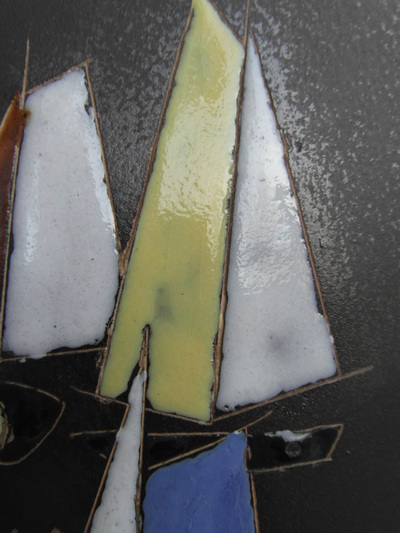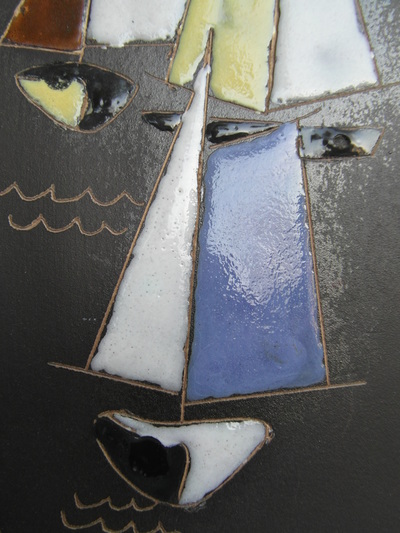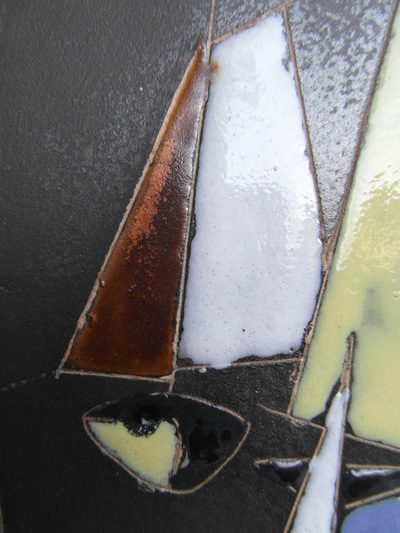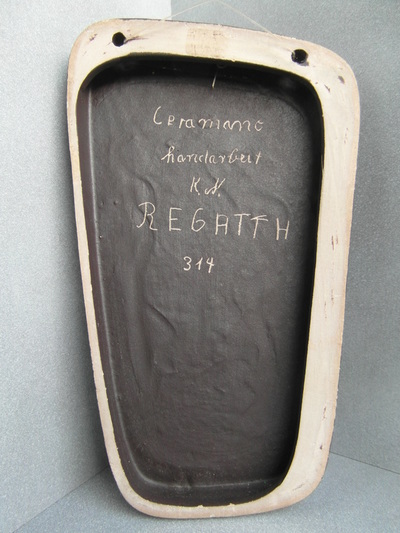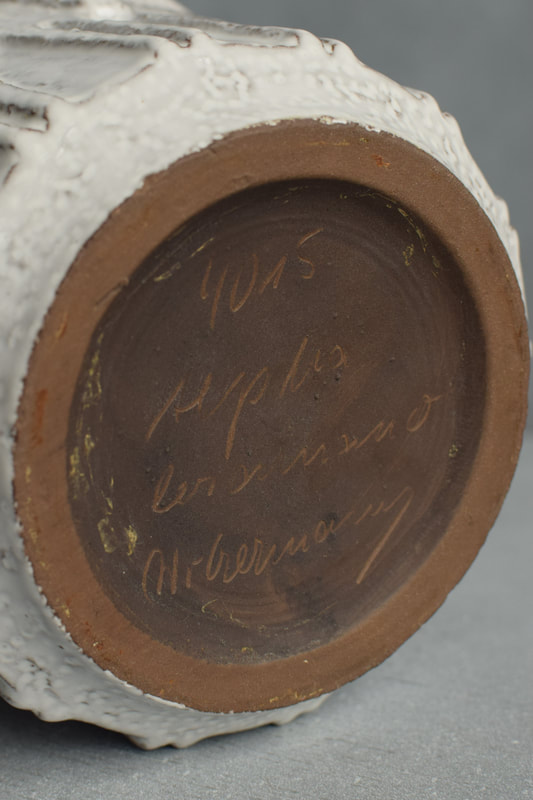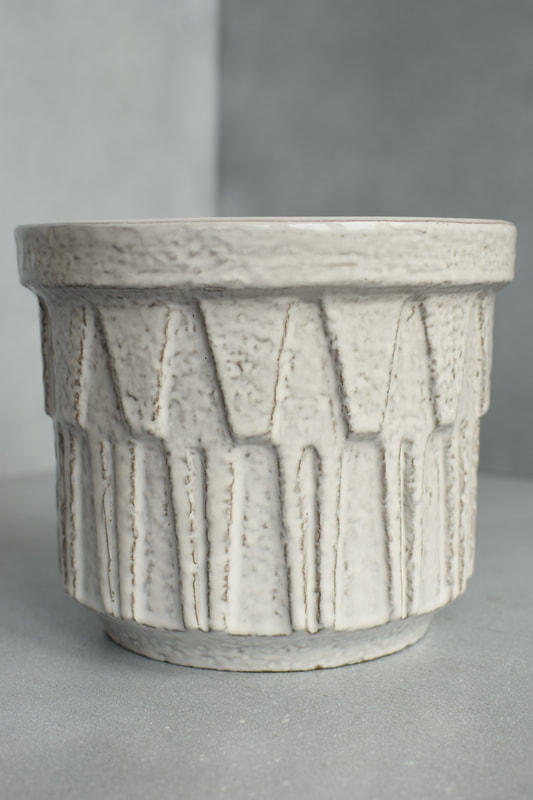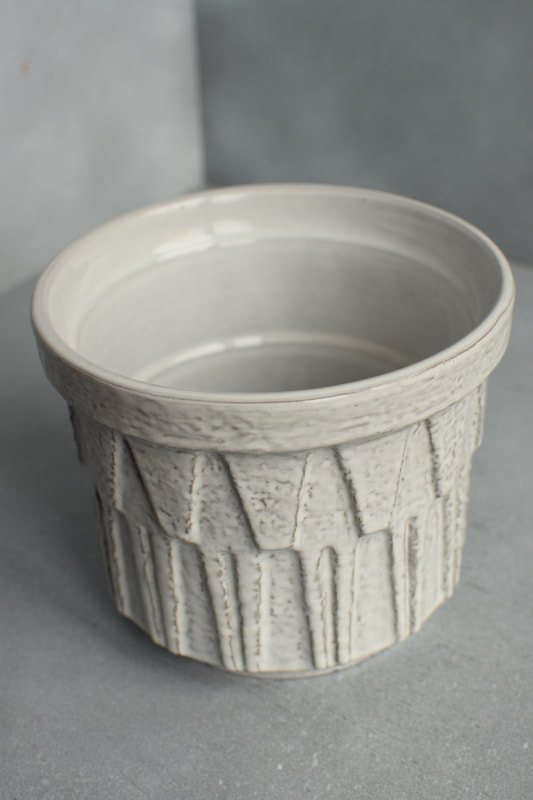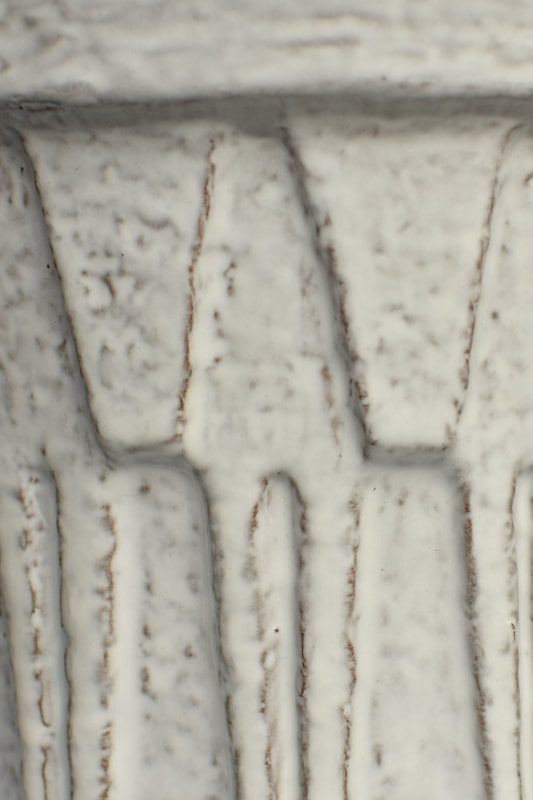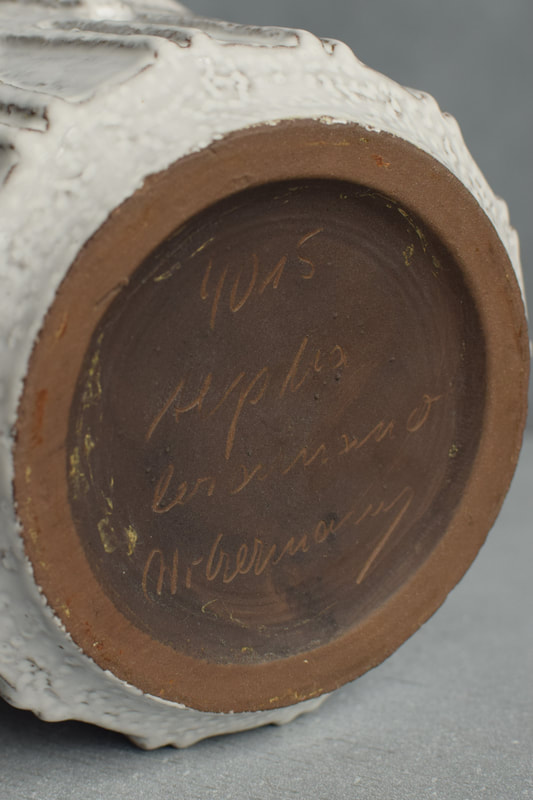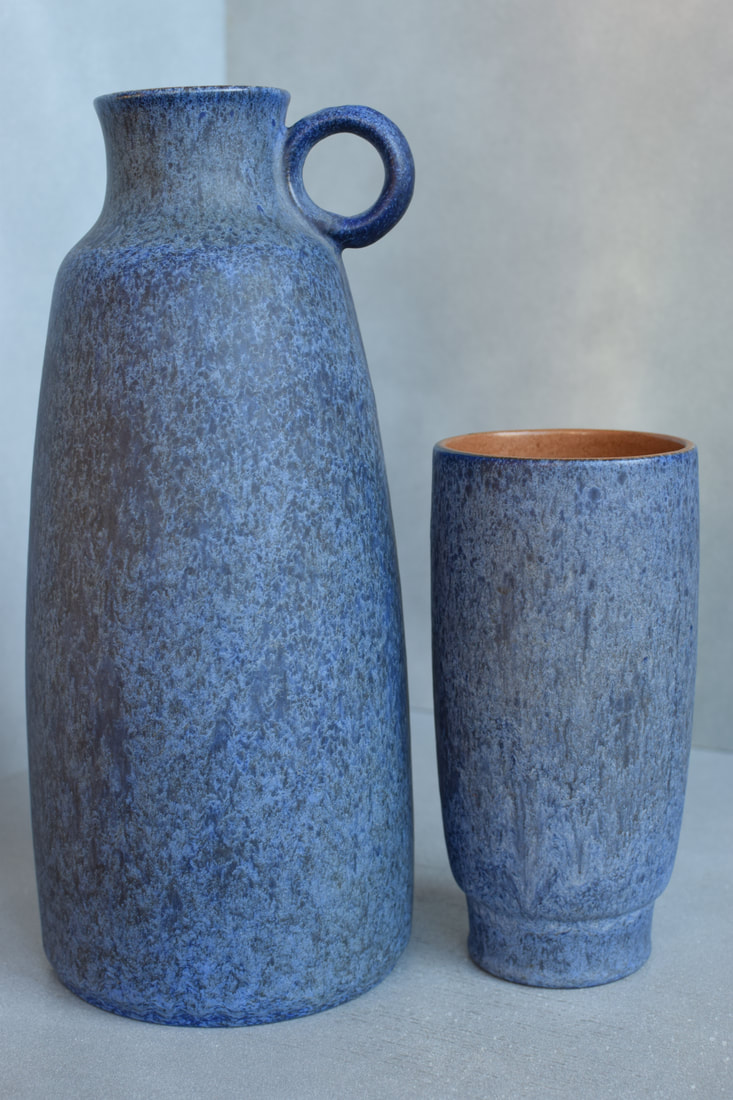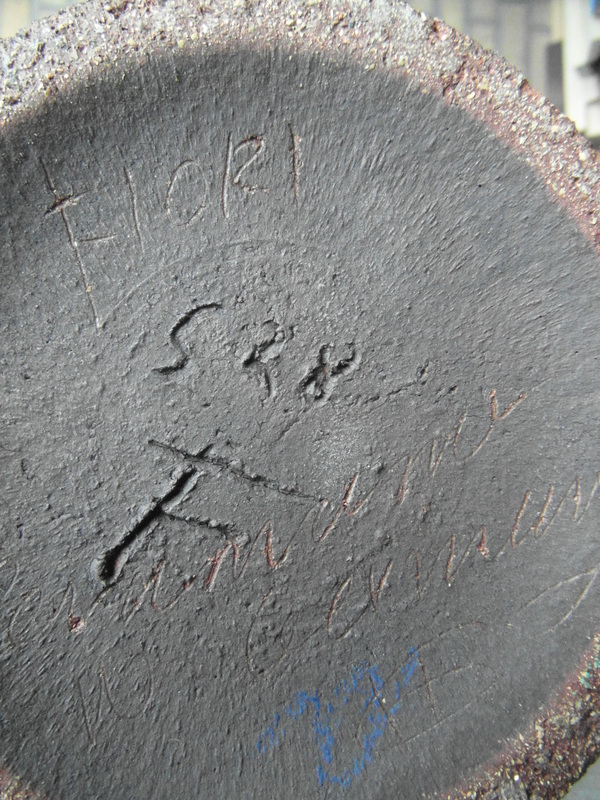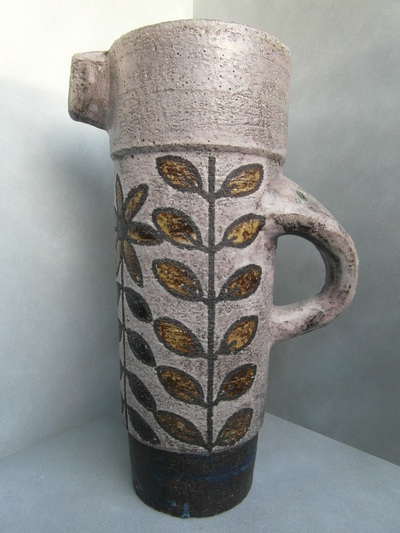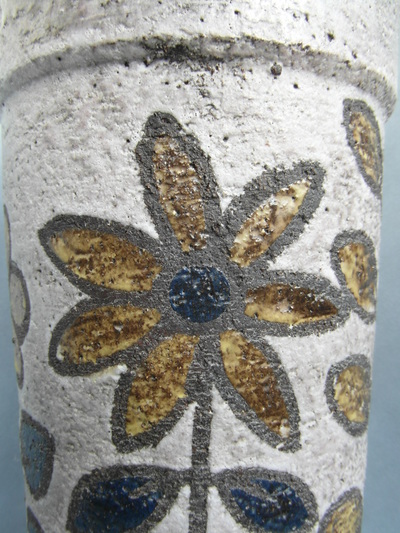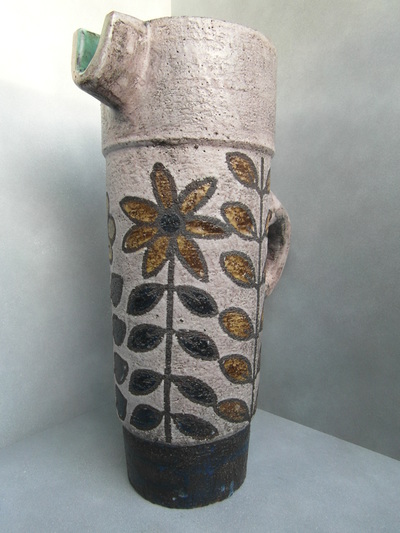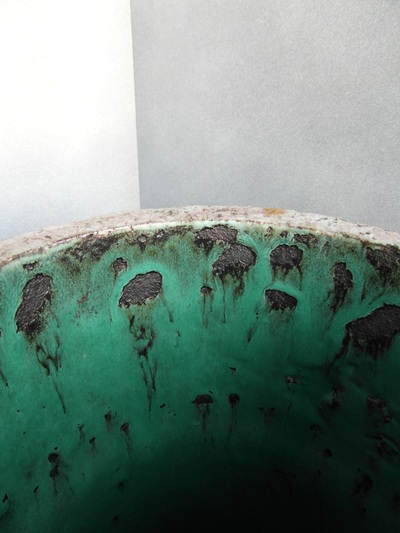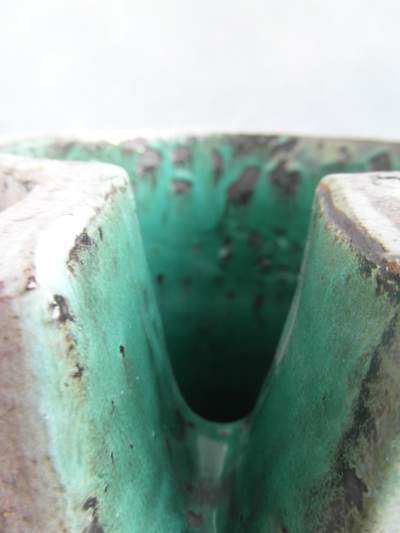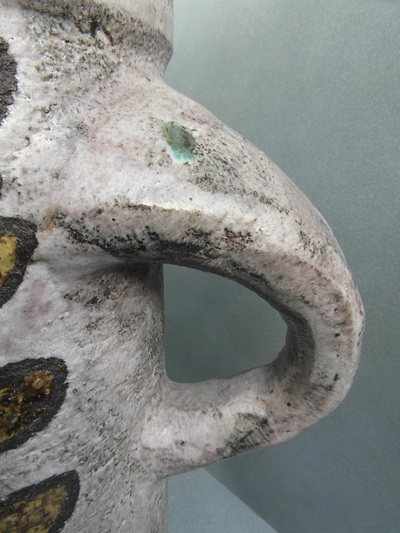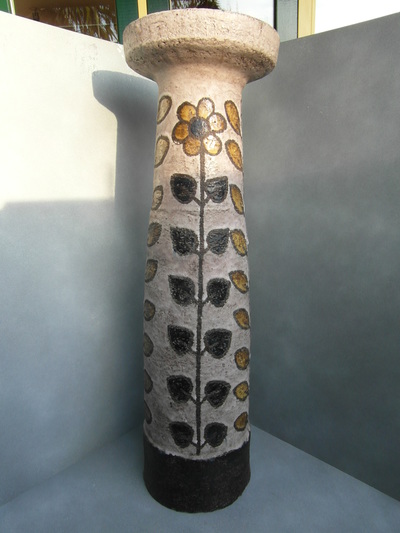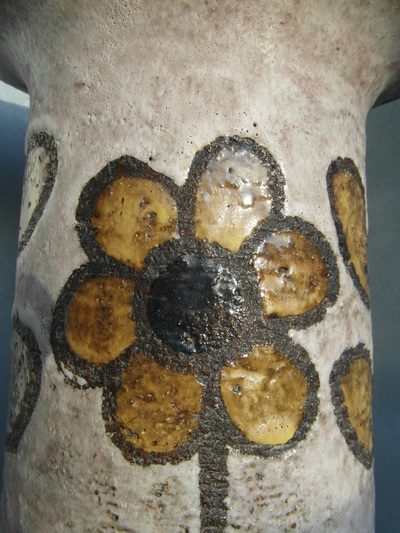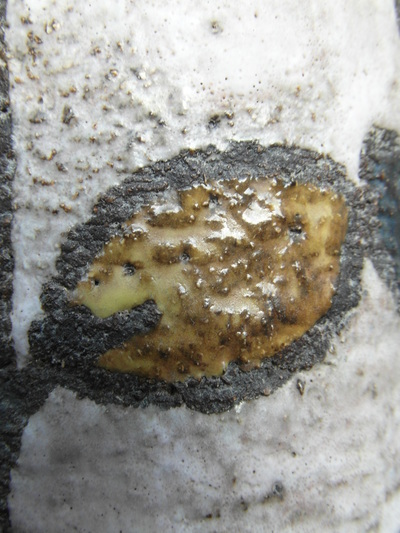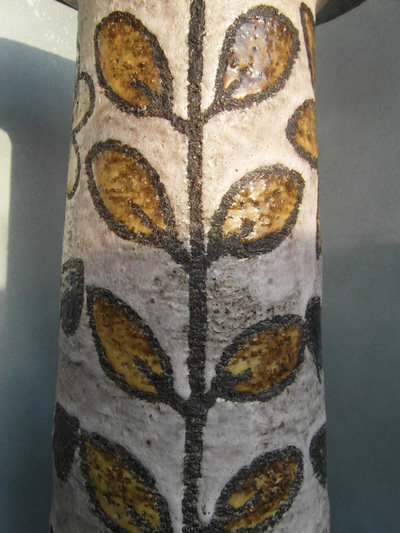Inhoud van deze pagina: Contents of this page:
|
-Inleiding/geschiedenis van Ceramano
-Uitleg over vormnummers, decornamen en labels -Foto's van vazen |
-Introduction/history of Ceramano
-Explanation about formnumbers, decornames and labels -Pictures from vases |
Ceramano-Kunstkeramik.
Jakob Schwaderlapp, eigenaar van Jasba-Keramik in Ransbach, stichtte in 1959 een onderneming die het doel had de vervaardiging van hoogwaardig, handgemaakt sier- en bouwkeramiek. Zijn zoon Willi Schwaderlapp die medevennoot was nam de leiding van het bedrijf over. In 1964 volgde afsplitsing uit de firma.
Het bedrijf onderging een positieve economische ontwikkeling door de overname van de firma Waku. Hierdoor nam het exportaandeel toe met een kwart van de gezamenlijke productie. Het assortiment van servies en ander keramisch tafelgerei werd verder uitgebreid. De productie van wand- en vloertegels voorzag in keramische wandbekledingen die in die tijd regelmatig in de representatieve binnenhuisarchitectuur werd toegepast.
In 1977 werd de 'Steinzeug- und Mosaikplattenfabrik Ransbach-Baumbach' overgenomen. In 1984 werd het faillissement van de onderneming aangevraagd.
De oprichting van de onderneming had als doel het verkrijgen van een marktsegment voor hoogwaardig en overeenkomstig kostbare keramische objecten, waarvan de vervaardiging tot dan toe alleen aan kleine keramiekateliers voorbehouden was, maar die nu te produceren door consequente toepassing van moderne productiemethodes weliswaar met in acht neming van methodes van artistieke ambachtslieden.
Toen de onderneming met het omvangrijke assortiment tijdens een tot in detail afgestemde wervingscampagne in de openbaarheid trad en het programma op de 'Frankfurter Frühjahrsmesse' tentoonstelde werd Hans Welling voorgesteld als de man die verantwoordelijk was voor niet alleen alle vormen en decoren, maar ook de gehele presentatie en productreclame( tentoonstellingstands, catalogi, reclamefoto's en advertenties), de visie van de onderneming en het concept van zijn gehele programma. Hij bleef tot 1962 daarvoor verantwoordelijk. De vormgeving werd daarna overgenomen door Gerda Heuckeroth.
Het bedrijf onderging een positieve economische ontwikkeling door de overname van de firma Waku. Hierdoor nam het exportaandeel toe met een kwart van de gezamenlijke productie. Het assortiment van servies en ander keramisch tafelgerei werd verder uitgebreid. De productie van wand- en vloertegels voorzag in keramische wandbekledingen die in die tijd regelmatig in de representatieve binnenhuisarchitectuur werd toegepast.
In 1977 werd de 'Steinzeug- und Mosaikplattenfabrik Ransbach-Baumbach' overgenomen. In 1984 werd het faillissement van de onderneming aangevraagd.
De oprichting van de onderneming had als doel het verkrijgen van een marktsegment voor hoogwaardig en overeenkomstig kostbare keramische objecten, waarvan de vervaardiging tot dan toe alleen aan kleine keramiekateliers voorbehouden was, maar die nu te produceren door consequente toepassing van moderne productiemethodes weliswaar met in acht neming van methodes van artistieke ambachtslieden.
Toen de onderneming met het omvangrijke assortiment tijdens een tot in detail afgestemde wervingscampagne in de openbaarheid trad en het programma op de 'Frankfurter Frühjahrsmesse' tentoonstelde werd Hans Welling voorgesteld als de man die verantwoordelijk was voor niet alleen alle vormen en decoren, maar ook de gehele presentatie en productreclame( tentoonstellingstands, catalogi, reclamefoto's en advertenties), de visie van de onderneming en het concept van zijn gehele programma. Hij bleef tot 1962 daarvoor verantwoordelijk. De vormgeving werd daarna overgenomen door Gerda Heuckeroth.
Ceramo-Kunstkeramik.
In 1959 Jakob Schwaderlapp, owner of Jasba Keramik in Ransbach, founded an enterprise with the goal of manufacturing superior, hand-made decorative and building ceramics. His son and associate Willi Schwaderlapp took over the responsibility of the concern, in 1964 to be followed by a split-off from the company.
The business developed in a positive way by the takeover of the Waku concern. Owing to this the export share increased by a quarter of the joint production. The production range of crockery and other ceramic tableware was further extended. The manufacture of wall and floor tiles provided ceramic wall coverings that were regularly applied in representative interior design.
In 1977 the ‘Steinzeug- und Mosaikplattenfabrik Ransbach-Baumbach’ was taken over. In 1984 the firm had to file for insolvency.
The foundation of the enterprise had as its goal to obtain a market segment for superior and accordingly costly ceramic objects, of which the production until then was solely restricted to small ceramic workshops. However they had conceived the idea to produce it now by the consistent application of modern production methods admittedly observing the methods of artistic craftsmen.
When the enterprise went public with the extensive production range at a detailed advertising campaign by showing their programme at the ‘Frankfurter Frühjahrsmesse’ (Frankfurt Spring Fair), Hans Welling was introduced as the man in charge of not only all shapes and decorations, but also of the entire presentation and product advertising (exhibition stands, catalogues, advertising photography and adverts), the vision of the enterprise and the concept of his entire programme. He was to remain in charge until 1962. After this, design was taken over by Gerda Heuckeroth.
The business developed in a positive way by the takeover of the Waku concern. Owing to this the export share increased by a quarter of the joint production. The production range of crockery and other ceramic tableware was further extended. The manufacture of wall and floor tiles provided ceramic wall coverings that were regularly applied in representative interior design.
In 1977 the ‘Steinzeug- und Mosaikplattenfabrik Ransbach-Baumbach’ was taken over. In 1984 the firm had to file for insolvency.
The foundation of the enterprise had as its goal to obtain a market segment for superior and accordingly costly ceramic objects, of which the production until then was solely restricted to small ceramic workshops. However they had conceived the idea to produce it now by the consistent application of modern production methods admittedly observing the methods of artistic craftsmen.
When the enterprise went public with the extensive production range at a detailed advertising campaign by showing their programme at the ‘Frankfurter Frühjahrsmesse’ (Frankfurt Spring Fair), Hans Welling was introduced as the man in charge of not only all shapes and decorations, but also of the entire presentation and product advertising (exhibition stands, catalogues, advertising photography and adverts), the vision of the enterprise and the concept of his entire programme. He was to remain in charge until 1962. After this, design was taken over by Gerda Heuckeroth.
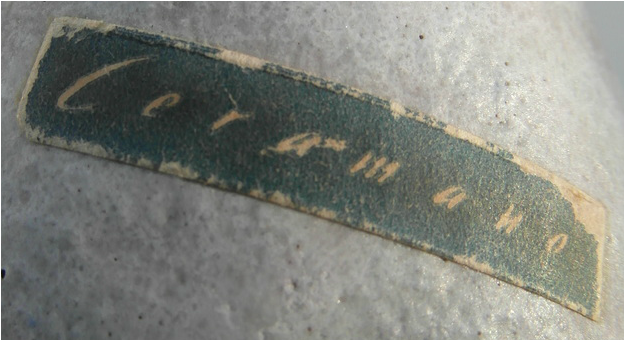
Klik hier om te bewerken.
Voor de vervaardiging van de vazen werd rood-bruine klei gebruikt. De meeste exemplaren zijn aan de onderkant met de hand gegraveerd door de decorateur. Dit versterkt het effect van uniek studio keramiek.
De gravering omvat meestal het vormnummer, de decornaam, de initialen van de decorateur en de naam van het bedrijf en de locatie. Indien een vormnummer aanwezig is dan is het meestal een 3-cijferig nummer en soms gevolgd door een getal van 1 t/m 6 dat de grootte aangeeft, waarbij 1 de kleinste is en 6 de grootste. De aanwezigheid van alle tekst is afhankelijk van de grootte van de vaas. Soms komt ook het woord 'Handarbeit' voor.
Vazen uit de latere periode werden voorzien van een papieren label. Eén van de vroege labels was een rechthoekig label met een roodachtige kleur, later gevolgd door een zilveren label met het vormnummer.
Red-brown clay was used for the manufacture of vases. Most copies have been engraved by hand at the bottom by the decorator. This enhances the effect of unique studio ceramics.
The engraving usually consists of the shape number, the decoration name, the initials of the decorator and the name of the concern wit hits location.
Whenever there is a shape number present, it is most of the time a 3-digit-number, sometimes followed by a number ranging from 1 to 6 indicating the size, 1 for the smallest and 6 for the largest. Whether or not there is any text depends on the size of the vase. At times we come across the word ‘Handarbeit’ (=Handmade).
Vases from later periods were provided with a paper label. One of the early labels was a rectangular label of a reddish colour, later to be followed by a silver label with its shape number.
Gedeelte van de kaart van Duitsland . Ransbach-Baumbach ligt in de buurt van Koblenz.
Detail of the map of Germany. The city of Ransbach-Baumbach is near Koblenz.
Vaasje met vorm nr. 203, decor: 'Arctis' / vase with form nr. 203, decor: 'Arctis'.
In de jaren zestig en zeventig gebruikte men ook een papieren label met 'Ceramano' in een klein lettertype.
In the 60-s and 70-s a paper label indicating ‘Ceramano’ in a small lettering type was also used.
In the 60-s and 70-s a paper label indicating ‘Ceramano’ in a small lettering type was also used.
Waterschenker, vorm nr. 229, decor: 'Manzana' / watering can, form nr. 229, decor: 'Manzana'.
Vaas met vorm nr. 109, decor: 'Elba' / vase with form nr. 109, decor: 'Elba'.
Vaas met vorm nr. 225, decor: 'Arctis' / vase with form nr. 225, decor: 'Arctis'.
Vaas met vorm nr. 205, decor: 'Arctis'. Ontwerp van Hans Welling.
Vase with form nr. 205, decor: 'Arctis'. Design by Hans Welling.
Vaasje met vorm nr. 251, decor: 'Royal' / vase with form nr. 251, decor: 'Royal'.
Vaas met vorm nr. 242, decor: 'Island' / vase with form nr. 242, decor: 'Island'.
Wandtegel met vorm nr. 314, decor: 'Regatta' / wall tile with form nr. 314, decor: Regatta'.
Plantenpot met vorm nr. 4015, decor: 'Alpha' / planter with form nr. 4015, decor: 'Alpha'.
Twee vazen met decor: 'Capri'. Van links naar rechts vorm nr. 228 en vorm nr. 101.
Two vases with decor 'Capri'. From left to right form nr. 228, and form nr. 101.
Twee vazen met decor: 'Capri'. Links vorm nr. 228, rechts vorm nr. 101.
Two vases with decor 'Capri'. Left form nr. 228, right form nr. 101.
Two vases with decor 'Capri'. Left form nr. 228, right form nr. 101.
